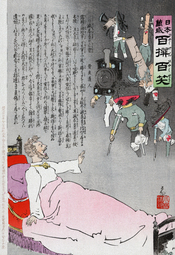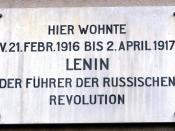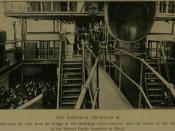Czarist Russia had had many problems. The Czar was strictly autocratic and yielded absolute power; but his government was inefficient and corrupt. Though we had 'Tsar Liberator' Alexander III, reforms were nil, unsuccessful and reversed by succeeding Czars. At a time where other western European powers were advancing in science, Russia was left behind in its firm, age-old traditions. There was widespread discontent among all the classes of Russian society and Lenin, the founding father of the Russian Soviet believed that Russia needed two revolutions before a communist state could be ushered: one from feudal to industrial and then from industrial to communist. The revolution dis not take place overnight. It took almost 17years for the Russians to topple the Tsarist system .
The gap between the rich and the poor was too wide. There was no middle class, no natural leaders of the society. Industrialization had rapidly spread and while the factory owners kept accumulating wealth, the factory workers were rendered poor and poor.
They were made to work inhumane hours and conditions. Most of the people were outraged at this exploitation but had no means to vent their fury.
There were 20 or so national minorities like the Armenians, the Fins, the Latvians, and the Poles etc who resented 'Russification'. The Jews felt prosecuted under the" pogroms ". The revolutionaries actually encouraged mass discontent in order to speed up the revolution; this was one reason why they didn't like reforms.
The Russo-Japanese war finished in 1905 and by the treaty of Portsmouth in the same year, Russia didn't have to pay Japan any indemnities. This meant that there were no additional taxes on the peasants to compensate for the diminishing state revenues. The soldiers were available to keep law and order and were moved away from...


